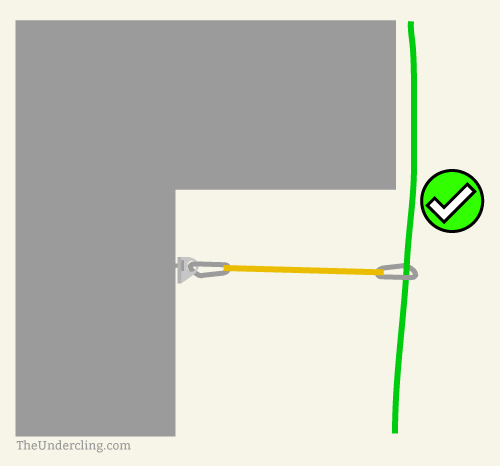Using Slings to Eliminate Rope Drag
Rope drag is one of the most insidious forces that climbers have to deal with. Rope drag occurs when one or multiple pieces of protection are too far out of alignment with the other pieces of protection. This creates a lot of friction in the rope-protection system. This friction can make continued upward progress anything from difficult to impossible.
The image below shows a few different scenarios. (Note that while the protection in the image are all bolts, rope drag is definitely a problem when trad climbing, too.)

When sport climbing, it’s not a bad idea to have a long quickdraw or two on your harness. When trad climbing, the climb itself will dictate what kinds of slings you’ll want to carry. You’ll probably be carrying 24″ (60 cm) slings as part of your normal trad gear, and these should help you eliminate most rope drag issues, but a 48″ (120 cm) sling or two can be very useful, especially on multi-pitch climbs.

Another time you want to be aware of rope drag is when climbing over roofs. On the last piece of protection before the roof, you need to have a sling that is long enough to allow the rope to extend beyond the lip of the roof (or at least as far out as it can reasonably get). If that last piece has a short sling on it, the rope will run right along the lip of the roof. Like this:

This is bad because it 1) creates rope drag, and 2) could lead to cutting of the rope if you fall and the lip of the rope is sharp (and if you’ve got a piece of gear in above the roof).
Instead, put a longer sling on that piece of protection and you’ll be good to go, like this:
